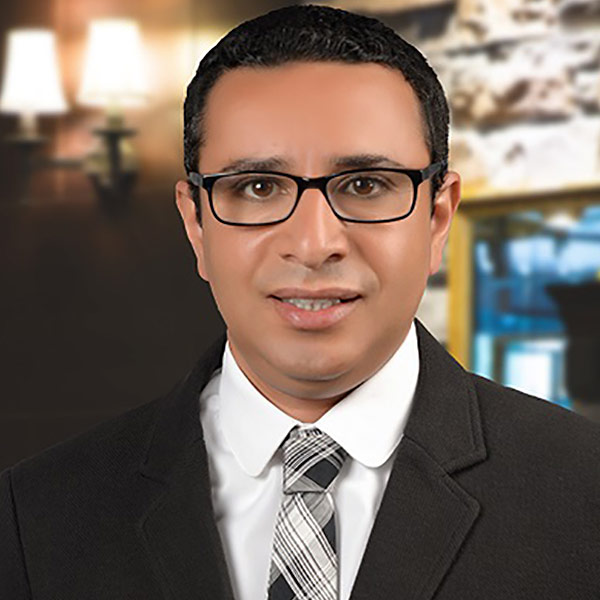Conversation With Early Career Cardiologist and Entrepreneur, Mohamed Elshazly, MD

Mohamed Elshazly, MD
Mohamed Elshazly, MD, is a cardiac electrophysiologist. He trained in internal medicine at Johns Hopkins University, and cardiology and cardiac electrophysiology at the Cleveland Clinic. He carries a master's degree in biotechnology enterprise and entrepreneurship from Johns Hopkins Krieger Institute of Arts and Sciences. Elshazly is going to join the Medical University of South Carolina this August as an Assistant Professor of Medicine and Cardiac Electrophysiology. He is also a co-founder of Ember Medical, a health software company that aims to revolutionize clinical management platforms, telehealth and remote monitoring in the Middle East and North Africa region. The company's vision is to utilize the recent digital health trends to improve health care accessibility, affordability, and efficiency.
As a successful academic electrophysiologist, what drove your interest in technology development?
As I've witnessed companies like Uber and Airbnb take off, I kept thinking about how we can use ubiquitous tools such as smart phones, internet, GPS, motion sensors and such to improve human health for people all over the world, including rural and underdeveloped areas. EP is also a field that is closely married to technology both on the software and hardware fronts. I was really inspired by reading about the history of the development of 3D mapping systems and ablation as well as devices, pacemakers, and defibrillators.
How were you able to find a team of collaborators with the necessary technical and business background who were willing to work on your idea?
I believe that there are two general paths in terms of finding the right team. The first path includes finding people within your institution. Some academic centers and hospital systems have innovation teams working under the leadership of a chief innovation officer. The second path is more complex. It is a high-risk high-reward path. It usually involves assembling your own team, pursuing your own funding through accelerators or venture capital, starting your own company, and eventually transitioning to working full time on your idea. Personally, I partnered with my cousin Shadi, an electric engineer and CEO of Ember Medical, to establish our company after taking a few months off from academic medicine. After graduation from an accelerator, raising money and assembling our own software development and marketing teams, I went back to academic medicine and continued to be the Chief Medical Officer of Ember.
Tell us about your experience with fund raising.
I was able to find a strong team with diverse backgrounds that could execute the idea and turn it into an actual company. We have raised more than 1.5 million dollars in venture capital funding from U.S. and global investors. Investors have different approaches to investing in early-stage companies, which are mostly based on experience rather than data. The best investors are those who become your partners. They believe in your vision and help you in every way possible to grow your company. There are several venture capital accelerator programs such as Y combinator and SOSV, which write small- to medium-sized checks and mentor you for a few months. Other paths for funding include grants such as the NIH's SBIR fund or other research grants. Before accepting any funds, make sure you carefully understand the terms of the investment and be familiar with business concepts such as SAFEs, and pre- and post-money valuations. Ultimately, two things matter the most in any company structure: Equity and control. Don't lose much of both at this early stage and use a lawyer if necessary.
What can healthcare institutions do to promote the success of physician innovators?
There are several things institutions can do. First, provide education in innovation. This can go from developing formal curricula to organizing inspiring talks by other physician innovators. Curricula should include educational materials such as product commercialization cycles including idea development, animal and human testing, as well as biotech financing, marketing, and leadership. Second, increase the exposure of trainees and young career physicians to successful careers in innovation. Be open about discussing how other physicians have commercialized their ideas and don't shy away from mentioning numbers. I believe institutions need to re-think their policies and allow physician innovators more ownership of their ideas. They should also carve out time for physicians to work on their idea. Third, innovation and tech transfer offices of academic centers should constantly engage with physicians to showcase services they may provide. Fourth, I believe it would be extremely productive for institutions to forge partnerships with tech companies or venture capital that can take on physicians to do electives or in-residence rotations. Finally, more institutions should think of developing formal paths in biotechnology and entrepreneurship, which can range from masters' programs to fellowships.

This interview was conducted by Ahmed M. Selim, MD, an FIT at New York University. Twitter: @DrAhmed_Selim.
This content was developed independently from the content developed for ACC.org. This content was not reviewed by the American College of Cardiology (ACC) for medical accuracy and the content is provided on an "as is" basis. Inclusion on ACC.org does not constitute a guarantee or endorsement by the ACC and ACC makes no warranty that the content is accurate, complete or error-free. The content is not a substitute for personalized medical advice and is not intended to be used as the sole basis for making individualized medical or health-related decisions. Statements or opinions expressed in this content reflect the views of the authors and do not reflect the official policy of ACC.
